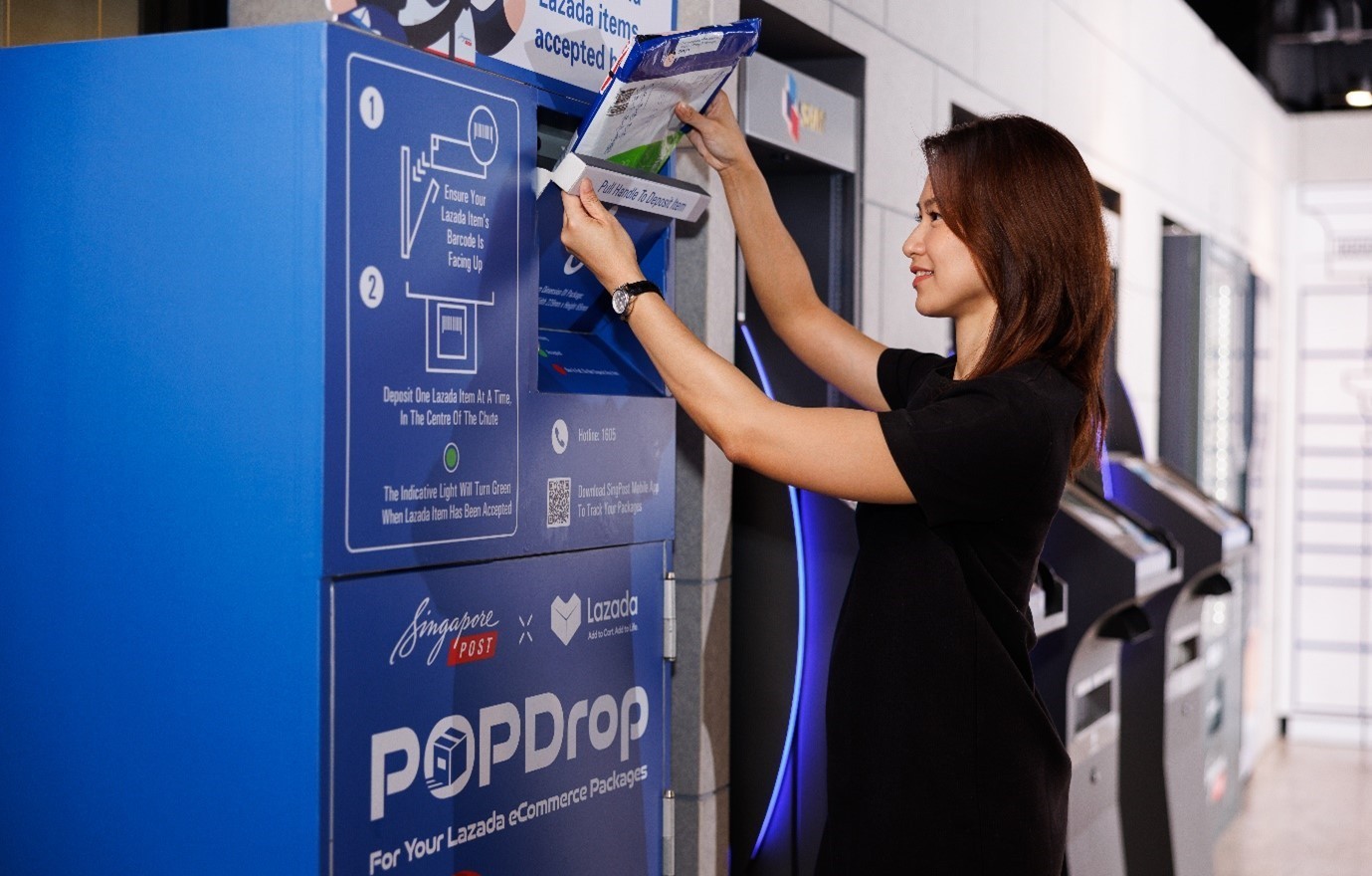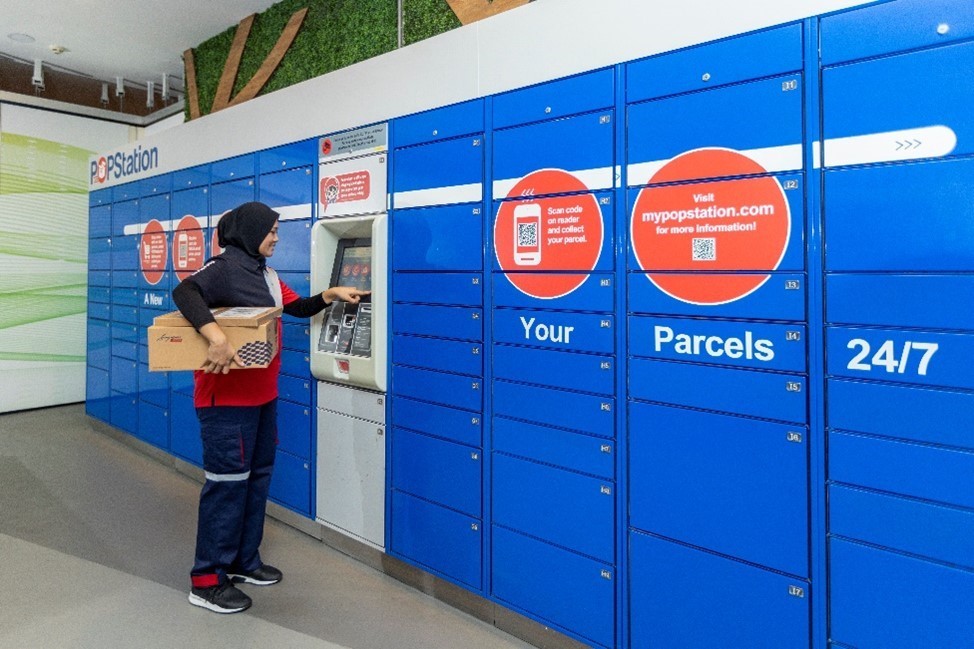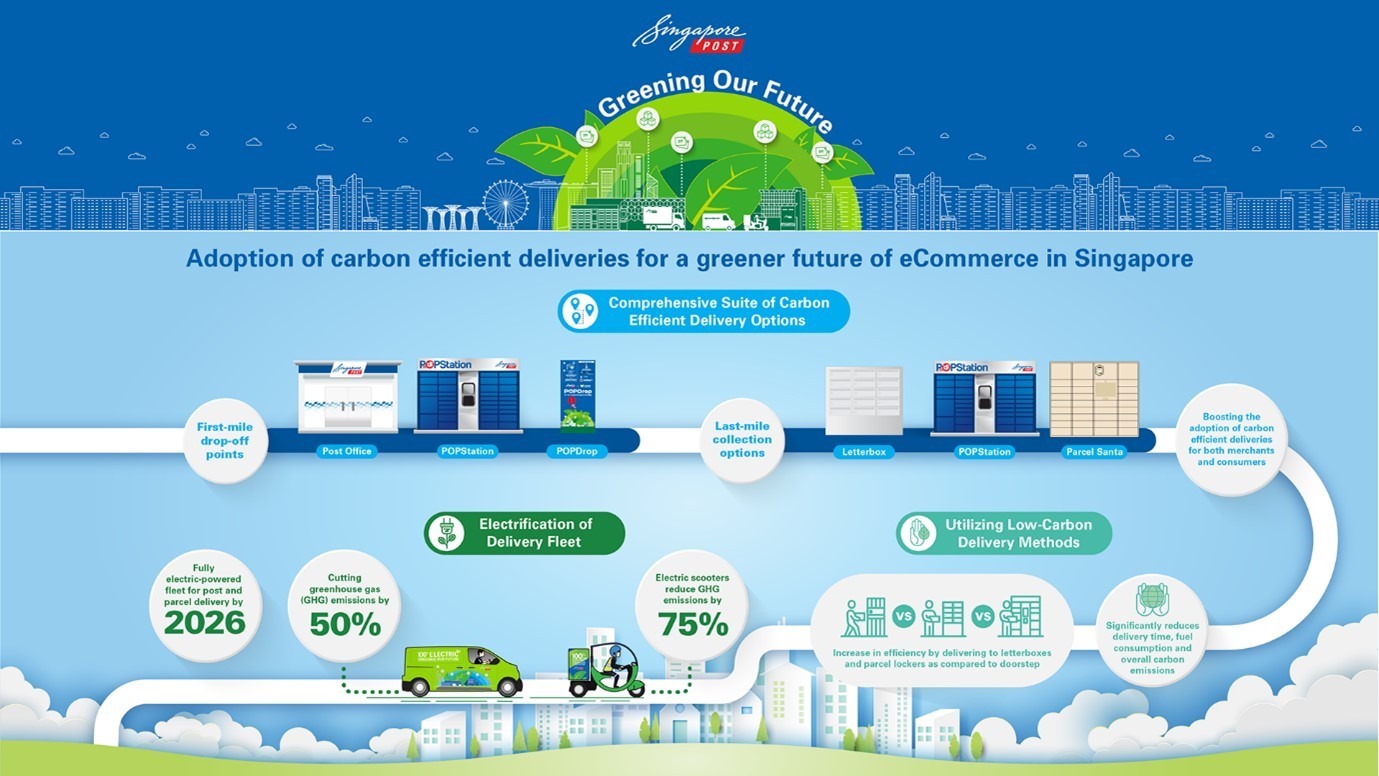
Mastering Year-End Peak Season: Out-of-Home eCommerce Delivery for Growth, Satisfaction, and Sustainability
As the year-end peak season approaches, eCommerce sellers must prioritise seamless delivery to capture maximum business opportunities. In a competitive market, swift and efficient service is key to boost customer satisfaction. But what are the delivery options that eCommerce sellers can provide their customers to meet demands head-on?
Let’s take a look at the current parcel delivery trend. In an era marked by rapid technological advancements and evolving consumer preferences, the world of parcel delivery is at a crossroads. A stark contrast has emerged between the conventional doorstep delivery model and the transformative potential of out-of-home (OOH) delivery methods. Recent observations have laid bare the disparity that while a mere 3.28% of parcels in Asia end up as OOH deliveries, pioneering markets like Finland have seamlessly integrated this approach for over 90% of their B2C parcels, as reported in research by parcel tracking platform, Parcel Monitor.
Amid the evolution of global eCommerce and the rise of eco-conscious consumers, the burgeoning OOH delivery trend beckons consumers to reconsider their last mile delivery preferences. For example, the demand for instant gratification has driven consumers to embrace online shopping with fervour, resulting in an expanded volume of goods being moved. However, the conventional doorstep delivery paradigm is becoming increasingly exclusive with premium pricing attached to this added convenience. Merchants, grappling with the escalating costs of last-mile logistics and increasing returns management, are also navigating uncharted waters.
OOH delivery not only offers a logistical alternative, but a necessary shift to address these challenges across the eCommerce ecosystem. According to Parcel Monitor, it can amplify delivery capacity by up to fivefold and curtail the cost of last-mile delivery by an astounding factor of ten. Beyond its economic implications, OOH delivery also holds the promise of mitigating environmental concerns, reducing urban congestion, and trimming carbon footprint by a significant two-thirds.
As I delve deeper into this paradigm shift, I would like to raise awareness on current cost of deliveries and share my thoughts on the various ways in which a robust OOH approach can revolutionise the entire landscape of logistics operations – fundamentally altering performance metrics, cost structures, and customer relationships.
The reality bites - Escalating cost of deliveries
Retailers and platforms have felt the pinch of increased delivery costs as the logistics industry buckles from external economic and inflationary pressures. As industry players are unable to maintain affordable, pandemic-era doorstep delivery rates fuelled by an abundance of manpower, the cost of deliveries in Singapore continues to escalate.
As of October 12, 2023, Certification of Entitlement (COE) prices for goods vans are S$85,900 and pump prices are hovering just under S$3 per litre. Extending existing delivery fleets to cover doorstep delivery is no longer viable for retailers who wish to control their own logistics and supply chain operations. The costs of vehicle ownership and fuel are also prohibitive for any aspiring logistics company seeking to expand their delivery fleet to offer doorstep delivery. While turning to the gig economy has provided a short-term solution to address these challenges, that solution is not a sustainable one for the long-term.
In 2024, new policies mandating compulsory insurance and pension contributions will be enacted. While these provide the basic protections that our gig workers need, they will increase manpower costs and warrant a rethink of operational costs of logistics companies. Already, we’re seeing the effect of the impending changes. Shipping and returns costs are gradually being passed on to the customers by retailers and platforms who are no longer able to bear the increasing cost of doing business.
Increased Conversions
eCommerce in Singapore has remained robust in recent years despite inflationary pressures – in fact, in a report released by Meta and Bain & Company, sales are expected to reach US$14 billion (S$19.6 billion) by 2027. Yet, one of the biggest challenges in the digital marketplace is abandoned shopping carts - often attributed to protracted delivery times and limited shipping choices. In fact, according to a joint report by PYMNTS and Citcon, cart abandonment rates in Asia Pacific hover at about 52%. An OOH-centric approach confronts this challenge head-on by offering clarity in delivery timelines and providing consumers with multiple delivery options. This enhanced transparency also improves merchant conversions and breathes new life into potentially lost sales.
More Secure and Successful eCommerce Transactions
The cornerstone of an effective OOH strategy is its ability to engineer first-time success and more secure collections and deliveries.
By strategically integrating well-planned Parcel Lockers, Pick-Up and Drop-Off points and ensuring goods are trackable, shipments can be expedited and thereby, improve customer satisfaction. For example, SingPost’s POPStop provides small businesses and eCommerce sellers a hassle-free shipping solution as dedicated and on-site staff can assist them with shipping processes and quick turnarounds. SingPost’s new Smart Posting Box, POPDrop also helps merchants and consumers by allowing them to track and trace statuses once their items are lodged.

Augmented by existing assets like Parcel Santa and letterboxes, SingPost is set to revolutionise Urban Logistics with its suite of OOH Solutions. These OOH solutions will provide consumers with secured deliveries in a letterbox or locker compartment which are accessible 24/7, almost eliminating failed attempts and any ensuing frustration.

Enhanced Flexibility
The beauty of an effective OOH strategy lies in its adaptability. Sellers can cater to diverse customer preferences by presenting an array of delivery choices. For example, PayPal’s Borderless Commerce Report 2022 showed that 55% of online shoppers are willing to pay more for a convenient buying experience. One-third of buyers also use services that provide quick, on-demand domestic delivery.
In response to this, SingPost launched its POPStations (Pick Own Parcel Station) to let consumers collect, return, or post their parcels at its lockers any time and any day within the collection period. The convenience of selecting preferred times and locations resonates deeply with modern consumers, positioning OOH as the epitome of customer-centricity.

Reducing Environmental Impact
An optimised OOH strategy also carries far-reaching environmental implications. By curbing failed collection and delivery attempts and minimising unnecessary mileage, carbon emissions are significantly reduced.
Europe is a more mature market for OOH solutions, with Poland being a prime example. According to the Last Mile Experts 2023 report, approximately 40% of all deliveries in Poland are OOH deliveries, and there are almost 40 OOH points for every 10,000 people – the most anywhere in Europe. OOH delivery options can be up to five times more efficient per route than home deliveries, reducing environmental impact by minimising total driving miles. These sustainable practices are not just ethically responsible; they represent a commitment to a greener future.

Equipped with an electrified fleet, SingPost’s OOH delivery solutions such as letterboxes and parcel lockers are more eco-friendly than doorstep deliveries. The math is conclusive - each postman can deliver to 1000 letterboxes per day, while each courier can operate up to 700 omni-channel locker compartments per day.
A Competitive Edge for Sellers
Finally, in the fiercely competitive landscape of eCommerce, differentiation is the key to survival. With enhanced reliability in deliveries, sellers can allocate resources away from sprawling customer service centres - saving costs and minimising lost items. As margins widen through OOH efficiencies, those who excel in delivery services naturally rise above the competition, showcasing a customer-centric approach driven by constant innovation.
Beyond the seasonal rush, the evidence is undeniable: an optimised OOH strategy is a cornerstone for sustained growth; it's an integral driver of success. From customer satisfaction and environmental responsibility to heightened competitiveness, the benefits ripple through the core of any logistics operation.
In embracing the OOH revolution, businesses don't just streamline their processes—they future-proof their operations for a world where innovation and efficiency reign supreme.
Stay connected on upcoming industry trends with us here!












